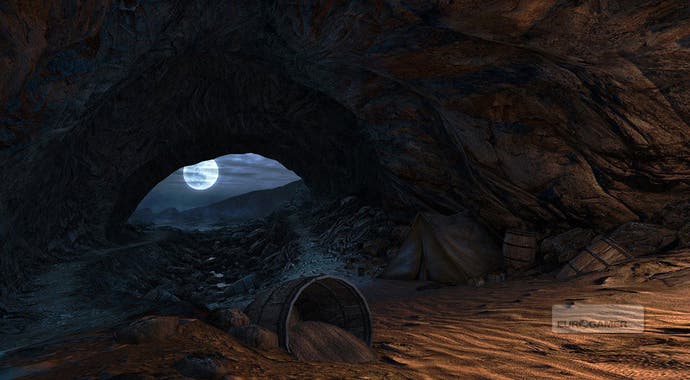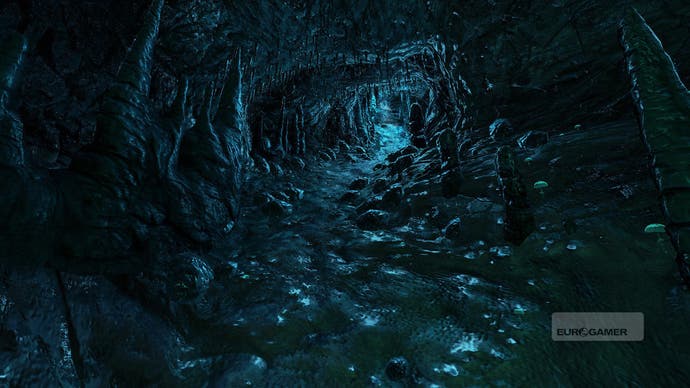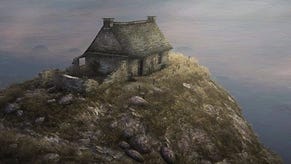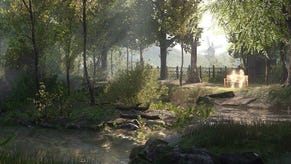Dear Esther
Uncharted terrain.
The route ahead is always clear, as a tall radio tower at the island's peak provides an omnipresent reference point for where you need to be heading. But you're rewarded for straying from the established path, either with a new snippet of the storyline or simply an astonishing vista to gawp at.
This is, without a doubt, the most beautiful looking Source Engine game to date. Briscoe's careful modelling and texture work, not to mention a few tweaks to the code, have created something that's every bit the competitor to even the flashiest current-gen tech.
Foliage sways in the breeze while the moon is reflected hauntingly in the rippling ocean. In the caves, which make up the bulk of Dear Esther's middle section, phosphorescent light illuminates the dank passages with hypnotic greens and blues as waterfalls cascade down the rock face.
Dear Esther might be an unusual, experimental game, but it's not difficult to see why Valve have snapped it up for a full release: it's an exquisite demonstration of how powerful their technology still is.
And it's not just about good looks. Without any element of challenge to speak of, Dear Esther is a hundred per cent reliant on the atmosphere it creates. Combined with the strong voiceover work and a twisting, unnerving and powerful soundtrack (which will have been completely re-recorded by the time the game's available to buy), the mesmerising visuals draw you effortlessly into Esther's world, captivating and engrossing at every turn.

The original version of Dear Esther reached a breathtaking climax with a climb towards the island's peak, as the final strands of the story slotted into place and you strode onwards towards your fate.
Briscoe and Pinchbeck are keeping this section of the remake tight to their chests at the moment, meaning I've only played the first two-thirds of the game. But what I've seen already throws up a few surprises, even to someone familiar with the mod.
Despite having been built by someone not initially involved with the project, the remake feels so much closer to what you expect Pinchbeck's vision was: something occasionally disturbing, often upsetting, but still a magical experience all the way.
Where the team might struggle is in convincing players to pay for what they could previously download as a free mod - especially when the concept is so different from that behind everything else in the gaming marketplace. Dear Esther is slow, thoughtful, and not necessarily what we'd consider to be "a game" in the traditional sense.
I'm reminded of the uproar when Tale of Tales released The Path back in 2009. It featured a multitude of controversial themes, but that wasn't the main thing people took issue with. The problem, for many, was the fact that Tale of Tales had dared to charge money for something so wildly experimental at all.
There are two reasons why I think this won't matter. The first is that the gaming populace has increasingly demanded innovation of late, and this is a brave and fascinating example of what's possible when you dare to play with the form.

It's reassuring to know that people like Dan Pinchbeck are scurrying away within academia, building up an understanding of how games work and how they might work in the future. If Dear Esther does well, that could spell exciting times in the months and years ahead.
The second reason is more straight-forward: Dear Esther is shaping up to be absolutely brilliant. It's a powerful and emotional piece of abstract storytelling, one that pushes all the right buttons despite its experimental nature.
It's beautifully constructed, it looks breathtaking, and the atmosphere that Robert Briscoe has managed to conjure up is enough to rival anything else you could mention.
So put aside any preconceptions about what games should do, and look at Dear Esther as an example of what they can do. We should all be thankful of the mod scene for allowing this sort of bleeding-edge design to flourish.
















